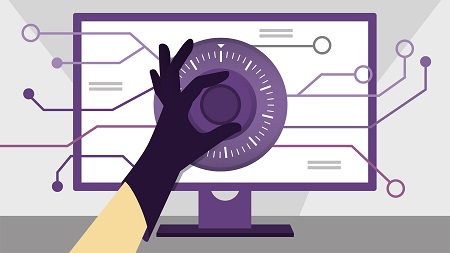
English | MP4 | AVC 1280×720 | AAC 48KHz 2ch | 1h 59m | 218 MB
Set a rock-solid foundation for your network, users, and data by learning about the basics of cybersecurity. Security expert Malcolm Shore describes how to assess and mitigate risks using various cybersecurity frameworks and control standards, such as NIST, COBIT 5, and the Payment Card Industry Data Security Standard (PCI DSS). Malcolm details pertinent cyber threats and how they operate, including how cyber criminals hide their attacks, how advanced persistent threats (APTs) work, and even how to determine what’s real and what’s merely cyber fear, uncertainty, and doubt (FUD). Throughout the course, he also covers managing cyber risk; selecting and applying controls; and the overall cybersecurity lifecycle, from managing defense to responding to cybersecurity incidents when they occur.
Topics include:
- Dissecting cyber risk
- Working with NIST, COBIT, and other frameworks
- Exploring cybercrime
- The different stages of the cyber kill chain
- How cyber criminals hide their attacks
- Measuring incident management maturity
- Detecting and responding to attacks
Table of Contents
1 Understanding the frameworks, standards, and technology that form what we know as cybersecurity
2 What you should know
3 The Orange Book Early concepts in computer security
4 Understanding the NIST Cybersecurity Framework
5 Adopting the NIST Cybersecurity Framework
6 Understanding the basics of cyber risk
7 Analyzing cyber threats and controls
8 Recording, reporting, and the risk context
9 An advanced risk framework
10 Managing security with COBIT
11 COBIT for operational security
12 Introduction to cybersecurity controls
13 Cybersecurity control framework
14 The ISF Standard of Good Practice
15 ASD and its top controls
16 Protecting payment card data
17 Clouding the issues
18 Securing things on the internet
19 Making sure security is effective
20 Understanding the cyber kill chain
21 Revisiting traditional threats
22 Botnets and the cyber crime industry
23 Cloaking and alternate data streams
24 Hiding using processes
25 Controlling the target through a rootkit
26 Understanding advanced persistent threats
27 Ransomware A modern form of extortion
28 Hardware implants and other cyber FUD
29 Incident management basics
30 Measuring incident management maturity
31 Detecting an attack
32 Responding to an incident
33 What’s next
Resolve the captcha to access the links!